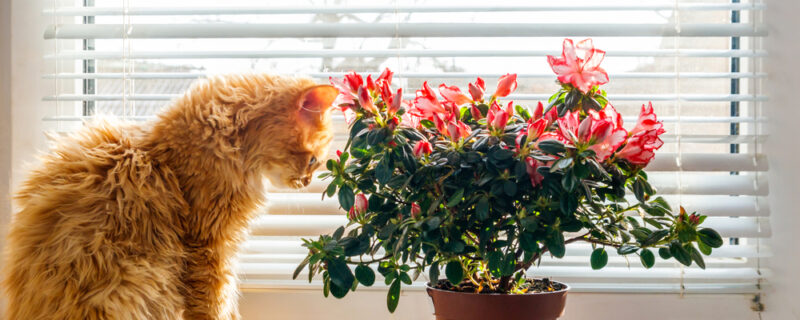
Local Dangers: Common Plants and Wildlife That Can Harm Your Pet in Louisiana
Louisiana’s lush subtropical climate creates an environment teeming with vibrant plant life and diverse wildlife. While this makes for a uniquely beautiful state, it also poses hidden threats to your four-legged family members. Many pet owners are unaware of just how dangerous their backyard or local parks can be for curious dogs and cats. From harmful plants for pets in Louisiana to dangerous wildlife for dogs and cats in St. Francisville, it is essential to understand these local hazards to keep your furry companions safe. Whether you live in New Orleans, Baton Rouge, or a smaller community like St. Francisville, the local flora and fauna can pose a very real risk. Understanding these dangers is a vital step toward comprehensive pet safety in Louisiana.
Toxic Plants: Silent Threats in Your Backyard
Louisiana’s subtropical climate supports a wide variety of ornamental and wild plants, many of which are toxic to dogs and cats. Among the most common are azaleas, sago palms, lilies, oleander, and castor beans. These plants, prized for their beauty and resilience, are widespread in gardens and parks across the state. Unfortunately, their appeal is matched by their toxicity. Azaleas, for instance, contain grayanotoxins that can cause vomiting, diarrhea, and even fatal cardiac collapse in pets. Sago palms, another common landscaping plant, carry a potent toxin called cycasin, which can lead to liver failure and death if ingested.
In addition to these well-known ornamental plants, pet owners should be mindful of native toxic species like jimsonweed and pokeweed. Even the seeds and berries from these plants can harm your pets, causing symptoms ranging from digestive upset to severe neurological damage. Louisiana, toxic plants for pets pose a year-round risk, as many of these species are evergreen or reseed themselves seasonally. Pet owners should routinely inspect their yards and know how to identify and remove dangerous plants to protect their animals from accidental poisoning.
Wildlife Hazards: The Hidden Predators of Louisiana
When thinking of wildlife threats, most people imagine dangerous animals deep in the swamp, far from their suburban home. However, Louisiana’s diverse ecosystem means that wildlife regularly overlaps with human habitation. In areas like St. Francisville, for example, coyotes, bobcats, and even alligators have been spotted close to residential neighborhoods. These predators, though rarely aggressive toward humans, see small dogs and cats as easy prey, especially during leaner seasons.
Other dangerous wildlife for dogs and cats in St. Francisville include venomous snakes such as the copperhead, cottonmouth, and eastern diamondback rattlesnake. These snakes thrive in the humid climate and can be found in woodpiles, tall grass, or even along hiking trails. A curious pet that approaches a resting snake could suffer a potentially fatal bite. Beyond predators and reptiles, you should also be wary of raccoons, which carry diseases like rabies and canine distemper. These diseases can be transmitted to your pet through bites or scratches. Understanding the behaviors of these wild animals and taking precautions — such as supervising your pet outdoors — is vital to maintaining pet safety in Louisiana.
Insects and Amphibians: Small but Dangerous
While large predators and venomous snakes get the most attention, smaller wildlife can be equally hazardous to your pets. Fire ants, for example, are a well-known nuisance across Louisiana. Their bites are painful and can cause severe allergic reactions in sensitive animals. Pets that disturb a fire ant mound may suffer dozens of stings, leading to swelling, intense itching, and in rare cases, anaphylactic shock.
Similarly, toads native to Louisiana, including the invasive cane toad, secrete toxins through their skin that can be deadly to pets if licked or bitten. These toads often appear around water sources, making them a common encounter for curious animals in backyards. Cane toad toxins can lead to drooling, seizures, and cardiac arrest in dogs and cats. Pet owners should be vigilant when pets are near ponds or even water bowls left outdoors, as toads are known to climb into them.
Spiders, particularly the brown recluse and black widow, are another small but serious danger. These spiders tend to hide in woodpiles, garages, and crawl spaces, areas where pets may explore. A single bite can cause significant tissue damage or systemic illness. Awareness and control measures — such as routine pest management — are essential components of responsible pet ownership in this environment.
Practical Tips for Protecting Pets in Louisiana
Being aware of the risks is only the first step in ensuring pet safety in Louisiana. Pet owners should take a multi-layered approach to protecting their animals. First, focus on landscaping. Replace harmful plants for pets in Louisiana with pet-friendly alternatives such as rosemary, basil, or native ferns. Keeping your lawn trimmed and free of tall grasses can discourage snakes and small predators from moving in. Fencing your yard securely and checking it regularly for damage or digging spots will help keep both wildlife out and your pets safely in.
Second, practice vigilant supervision. Always accompany your pets outdoors, particularly in the early morning or late evening hours, when wildlife is most active. Leashing your pet while walking through wooded areas or parks can prevent them from running off and encountering dangerous wildlife for dogs and cats in St. Francisville or other rural communities. Also, consider enrolling your dog in snake-aversion training, a specialized class that teaches dogs to recognize and avoid venomous snakes.
Finally, maintain routine veterinary care, including up-to-date rabies vaccines and parasite prevention. Heartworm, fleas, and ticks are prevalent in Louisiana’s climate and can seriously impact your pet’s health if left unchecked. Regular checkups will also give you a chance to discuss local wildlife concerns with your veterinarian and develop a prevention plan tailored to your region and lifestyle. These proactive steps will make a significant difference in protecting your pets from the threats posed by Louisiana’s unique environment.
Community Resources and Advocacy for Pet Safety
Protecting pets from Louisiana’s natural hazards should not fall solely on individual owners. Community efforts can make a huge difference in improving awareness and preparedness. Local animal control agencies and wildlife services in places like St. Francisville often offer educational programs about common toxic plants, as well as workshops on identifying dangerous wildlife for dogs and cats. Participating in these community programs helps you stay up to date on seasonal threats, such as increases in venomous snake sightings or plant blooms that are particularly toxic during certain months.
Advocacy groups are also working to spread awareness of harmful plants for pets in Louisiana by partnering with gardening centers to distribute safe-plant guides. Supporting these initiatives can help reduce the spread of toxic plants and encourage safer landscaping practices in neighborhoods. If you are part of a homeowner’s association, consider introducing pet-safety topics at meetings, so everyone in your neighborhood is aware of the issues and how to address them.
Moreover, social media has become a powerful platform for alerting residents to wildlife sightings, missing pets, and disease outbreaks. Following local animal shelters and wildlife organizations online can help you stay informed and connected to resources. Collaboration within the community is crucial to ensuring that all pets — whether cats curled up in a sunny window or dogs romping through the yard — can live safely in Louisiana’s rich but potentially hazardous natural world.
Conclusion
The beauty of Louisiana’s wild spaces comes with responsibility. Understanding the dangers of Louisiana, toxic plants for pets, the threat of dangerous wildlife for dogs and cats in St. Francisville, and even the risk from small insects and amphibians is the key to keeping your furry family members safe. Through education, preparation, and community cooperation, pet owners can navigate these challenges and continue to enjoy the joys of pet companionship in this extraordinary state. By staying vigilant and proactive, you will help ensure that your pets thrive in Louisiana’s unique — and sometimes dangerous — natural environment.
Need a Veterinary Clinic in Saint Francisville, LA?
Categorised in: Pet Safety
